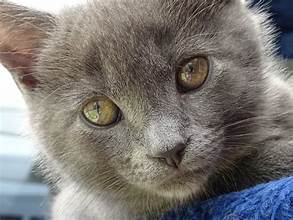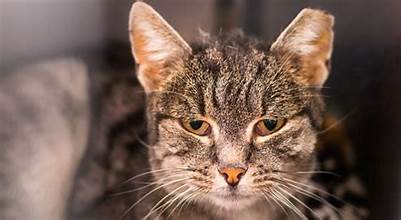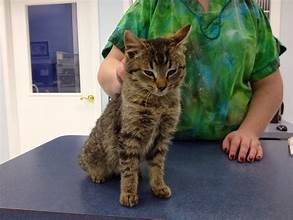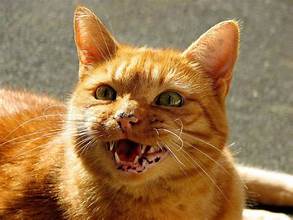As a responsible cat owner, understanding the most dangerous diseases that can affect your feline friend is crucial. Many of these diseases can be life-threatening, but your vigilance in early detection and prevention can significantly improve your cat’s health and well-being. Here’s a comprehensive guide to the top 5 most dangerous diseases in cats, their causes, diagnosis, treatment, mortality rate, and most importantly, how to prevent them.
1. Feline Leukemia Virus (FeLV)

Cause:
Feline Leukemia Virus is a viral infection that weakens the immune system, making cats more susceptible to other illnesses. FeLV is primarily transmitted through saliva, nasal secretions, and bites from infected cats, though it can also spread via shared food or water bowls and litter boxes.
How It’s Diagnosed:
FeLV is diagnosed through blood tests, such as the enzyme-linked immunosorbent assay (ELISA) test, which detects the virus’s antigens in the blood.
Treatment:
While FeLV has no cure, supportive care can significantly improve your cat’s quality of life. This may include antibiotics for secondary infections, medications to boost the immune system and treatments for other complications. In some cases, antiviral medications may offer hope in managing the disease.
Mortality Rate:
FeLV is a leading cause of death in cats, with a high mortality rate. Cats infected with FeLV have a significantly reduced life expectancy, often living only 2-3 years after diagnosis.
Preventative Actions:
Vaccination is a powerful tool in your arsenal against these diseases. While it’s not 100% foolproof, it significantly reduces the likelihood of your cat contracting FeLV. Vaccination is necessary if your cat goes outdoors or is exposed to other cats. Keeping your cat indoors and away from infected cats is also a key preventative measure.
2. Feline Immunodeficiency Virus (FIV)

Cause:
Feline Immunodeficiency Virus is similar to HIV in humans and attacks the immune system, leaving cats vulnerable to other infections. It is primarily spread through bites from infected cats, although it can also be transmitted through mating.
How It’s Diagnosed:
FIV is diagnosed through blood tests that detect antibodies against the virus. A positive result indicates infection, but further tests may be required to confirm the disease’s stage and severity.
Treatment:
While there’s no cure for FIV, many cats can lead relatively everyday lives for many years with proper care. Treatment involves managing secondary infections, boosting the immune system, and stabilizing the cat’s health. This should give you hope and reassurance that your cat can still have a good quality of life despite the diagnosis.
.
Mortality Rate:
If properly cared for, FIV-infected cats can live for many years. The disease is not typically fatal; the weakened immune system can lead to opportunistic infections. The mortality rate increases with severe secondary infections.
Preventative Actions:
Vaccination against FIV is a crucial preventive measure. While it may not be widely recommended in all areas, it can significantly reduce the likelihood of your cat contracting FIV. The most effective way to protect your cat from FIV is to keep it indoors, prevent exposure to infected outdoor cats, and ensure it is up to date with its vaccinations.
3. Feline Distemper (Panleukopenia)

Cause:
Feline distemper, also known as panleukopenia, is a highly contagious viral disease caused by the feline parvovirus. It attacks the cat’s gastrointestinal, immune, and nervous systems and is most common in kittens.
How It’s Diagnosed:
Diagnosis is typically based on clinical symptoms and blood tests that detect low white blood cell counts (a hallmark of the disease). A PCR (polymerase chain reaction) test may also be used to confirm the presence of the virus.
Treatment:
There is no specific antiviral treatment for feline distemper. Treatment focuses on providing supportive care such as fluids to prevent dehydration, medications to control vomiting and diarrhea, and antibiotics to prevent secondary infections.
Mortality Rate:
Feline distemper has a high mortality rate, especially in kittens and cats with weak immune systems. Without treatment, the mortality rate can be as high as 90%. With proper care, the survival rate improves.
Preventative Actions:
The best prevention is vaccination. Kittens should receive their first distemper vaccine at 8 weeks, with boosters every 3-4 weeks until they are 16 weeks old. Adult cats should receive booster shots annually or as recommended by their vet.
4. Rabies

Cause:
Rabies is a viral disease that affects the nervous system, causing inflammation in the brain. Once symptoms appear, it is always fatal. It is typically spread through the saliva of infected animals through bites, scratches, or open wounds.
How It’s Diagnosed:
Rabies is diagnosed post-mortem through examination of brain tissue. If a cat is suspected of rabies, symptoms and a history of exposure to potentially infected animals can guide the diagnosis, but definitive testing requires tissue samples.
Treatment:
Once a cat shows symptoms of rabies, there is no treatment, and the disease is fatal. However, if a potentially rabid animal bites a cat, it can be given a rabies vaccination series, which, if administered promptly after exposure, may prevent the disease.
Mortality Rate:
Rabies is 100% fatal once symptoms appear.
Preventative Actions:
Vaccination against rabies is mandatory in many areas and is essential for all cats, especially those that may contact wildlife or roam outdoors. Regular vaccinations are crucial, and indoor cats should be protected from wildlife.
5. Chronic Kidney Disease (CKD)

Cause:
Chronic Kidney Disease is a progressive condition where the kidneys gradually lose their ability to function. It is common in older cats and can be caused by genetic factors, high blood pressure, infections, or toxins.
How It’s Diagnosed:
CKD is diagnosed through blood tests (measuring creatinine and blood urea nitrogen levels), urinalysis, and imaging tests, such as ultrasounds, to evaluate kidney size and function.
Treatment:
There is no cure for CKD, but the condition can be managed with a combination of diet changes, medications to control blood pressure and protein levels, fluid therapy, and kidney support supplements. In severe cases, intravenous fluids may be necessary.
Mortality Rate:
CKD is progressive and eventually fatal, but with early detection and appropriate management, many cats can live for years with a good quality of life.
Preventative Actions:
There is no guaranteed way to prevent CKD, but maintaining a healthy diet, ensuring your cat has access to fresh water, and keeping them free from toxins can help reduce the risk. Regular veterinary check-ups are essential for early detection, especially in older cats.
Conclusion
Although these diseases are dangerous, many are preventable or manageable with proper care. Vaccination, regular vet check-ups, and proactive health management can significantly reduce the risk of these diseases and improve your cat’s chances of living a long, healthy life.
By staying informed and taking the necessary precautions, you can protect your beloved feline from the most dangerous diseases and ensure they enjoy many happy years with you.




